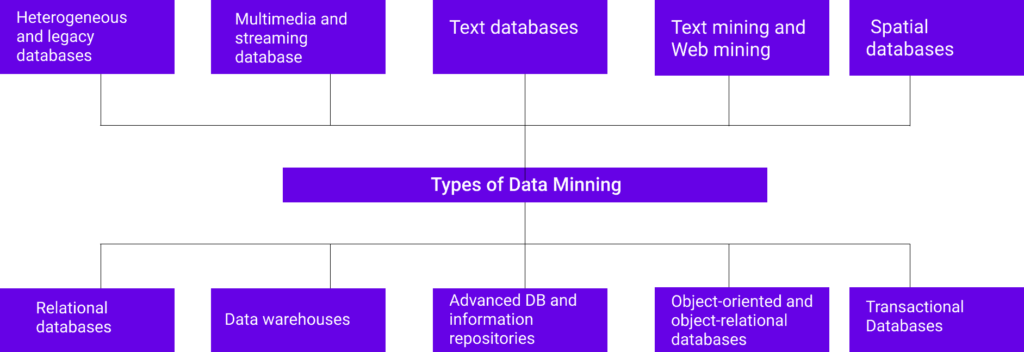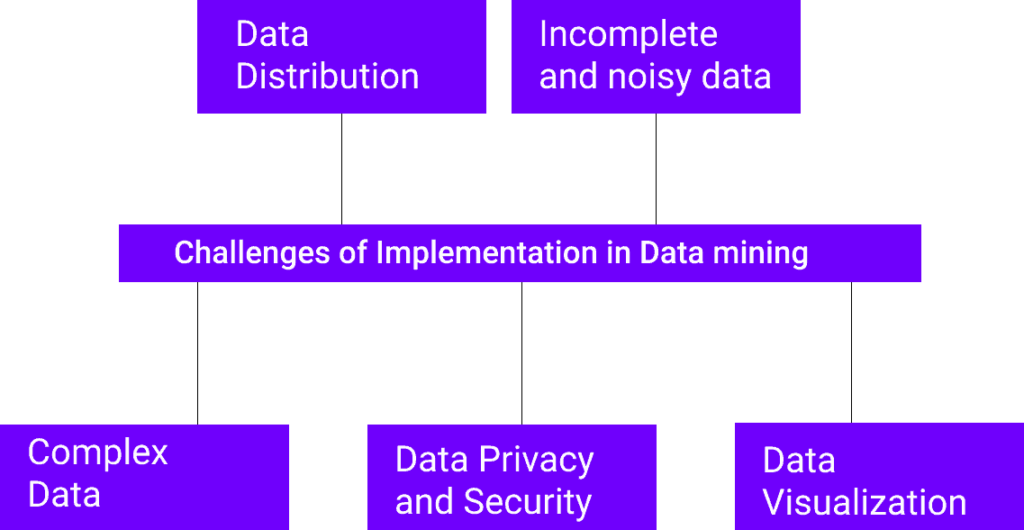Table of Contents
In this article, you’ll learn about What is Data Mining, Key features of data mining, What is data mining used for, Types of Data Mining and more.
What is Data Mining
Data mining is defined as a process used to extract usable data from a larger set of raw data. It implies analysing data patterns in large batches of data using one or more software.
In 1960s statisticians used the terms “Data Fishing” or “Data Dredging”. That was to refer to what they considered the bad practice of analyzing data. The term “Data Mining” appeared around 1990 in the database community.
Data mining has applications in multiple fields, like science and research. As an application of data mining, businesses can learn more about their customers and develop more effective strategies related to various business functions and in turn leverage resources in a more optimal and insightful manner. This helps businesses be closer to their objective and make better decisions. Data mining involves effective data collection and warehousing as well as computer processing.
For segmenting the data and evaluating the probability of future events, data mining uses sophisticated mathematical algorithms. Data mining is also known as Knowledge Discovery in Data (KDD).
Key features of data mining
- Automatic pattern predictions based on trend and behavior analysis.
- Prediction based on likely outcomes.
- Creation of decision-oriented information.
- Focus on large data sets and databases for analysis.
- Clustering based on finding and visually documented groups of facts not previously known.
What is data mining used for?
Data mining is the process of finding anomalies, patterns and correlations within large data sets to predict outcomes. Using a broad range of techniques, you can use this information to increase revenues, cut costs, improve customer relationships, reduce risks and more.
Types of Data Mining

- Relational databases
- Data warehouses
- Advanced DB and information repositories
- Object-oriented and object-relational databases
- Transactional and Spatial databases
- Heterogeneous and legacy databases
- Multimedia and streaming database
- Text databases
- Text mining and Web mining
Data mining can be performed on the following types of data
1.Relational Database:
A relational database is a collection of multiple data sets formally organized by tables, records, and columns from which data can be accessed in various ways without having to recognize the database tables. Tables convey and share information, which facilitates data searchability, reporting, and organization.
2.Data warehouses:
A Data Warehouse is the technology that collects the data from various sources within the organization to provide meaningful business insights. The huge amount of data comes from multiple places such as Marketing and Finance. The extracted data is utilized for analytical purposes and helps in decision- making for a business organization. The data warehouse is designed for the analysis of data rather than transaction processing.
3.Data Repositories:
The Data Repository generally refers to a destination for data storage. However, many IT professionals utilize the term more clearly to refer to a specific kind of setup within an IT structure. For example, a group of databases, where an organization has kept various kinds of information.
4.Object-Relational Database:
A combination of an object-oriented database model and relational database model is called an object-relational model. It supports Classes, Objects, Inheritance, etc.
One of the primary objectives of the Object-relational data model is to close the gap between the Relational database and the object-oriented model practices frequently utilized in many programming languages, for example, C++, Java, C#, and so on.
5.Transactional Database:
A transactional database refers to a database management system (DBMS) that has the potential to undo a database transaction if it is not performed appropriately. Even though this was a unique capability a very long while back, today, most of the relational database systems support transactional database activities.
Data Mining Applications
| Applications | Usage |
|---|---|
| Communications | Data mining techniques are used in communication sector to predict customer behavior to offer highly targetted and relevant campaigns. |
| Insurance | Data mining helps insurance companies to price their products profitable and promote new offers to their new or existing customers. |
| Education | Data mining benefits educators to access student data, predict achievement levels and find students or groups of students which need extra attention. For example, students who are weak in maths subject. |
| Manufacturing | With the help of Data Mining Manufacturers can predict wear and tear of production assets. They can anticipate maintenance which helps them reduce them to minimize downtime. |
| Banking | Data mining helps finance sector to get a view of market risks and manage regulatory compliance. It helps banks to identify probable defaulters to decide whether to issue credit cards, loans, etc. |
| Retail | Data Mining techniques help retail malls and grocery stores identify and arrange most sellable items in the most attentive positions. It helps store owners to comes up with the offer which encourages customers to increase their spending. |
| Service Providers | Service providers like mobile phone and utility industries use Data Mining to predict the reasons when a customer leaves their company. They analyze billing details, customer service interactions, complaints made to the company to assign each customer a probability score and offers incentives. |
| E-Commerce | E-commerce websites use Data Mining to offer cross-sells and up-sells through their websites. One of the most famous names is Amazon, who use Data mining techniques to get more customers into their eCommerce store. |
| Super Markets | Data Mining allows supermarket’s develope rules to predict if their shoppers were likely to be expecting. By evaluating their buying pattern, they could find woman customers who are most likely pregnant. They can start targeting products like baby powder, baby shop, diapers and so on. |
| Crime Investigation | Data Mining helps crime investigation agencies to deploy police workforce (where is a crime most likely to happen and when?), who to search at a border crossing etc. |
| Bioinformatics | Data Mining helps to mine biological data from massive datasets gathered in biology and medicine. |
Challenges of Implementation in Data mining

- Incomplete and noisy data
- Data Distribution
- Complex Data
- Data Privacy and Security
- Data Visualization
Advantages of Data Mining
- The Data Mining technique enables organizations to obtain knowledge-based data.
- Data mining enables organizations to make lucrative modifications in operation and production.
- Compared with other statistical data applications, data mining is a cost-efficient.
- Data Mining helps the decision-making process of an organization.
- It Facilitates the automated discovery of hidden patterns as well as the prediction of trends and behaviors.
- It can be induced in the new system as well as the existing platforms.
- It is a quick process that makes it easy for new users to analyze enormous amounts of data in a short time.
Disadvantages of Data Mining
- There is a probability that the organizations may sell useful data of customers to other organizations for money. As per the report, American Express has sold credit card purchases of their customers to other organizations.
- Many data mining analytics software is difficult to operate and needs advance training to work on.
- Different data mining instruments operate in distinct ways due to the different algorithms used in their design. Therefore, the selection of the right data mining tools is a very challenging task.
- The data mining techniques are not precise, so that it may lead to severe consequences in certain conditions.
Challenges of Implementation of Data mine:
- Skilled Experts are needed to formulate the data mining queries.
- Overfitting: Due to small size training database, a model may not fit future states.
- Data mining needs large databases which sometimes are difficult to manage
- Business practices may need to be modified to determine to use the information uncovered.
- If the data set is not diverse, data mining results may not be accurate.
- Integration information needed from heterogeneous databases and global information systems could be complex.
Thank you for reading, If you have reached so far, please like the article, It will encourage me to write more such articles. Do share your valuable suggestions, I appreciate your honest feedback!
